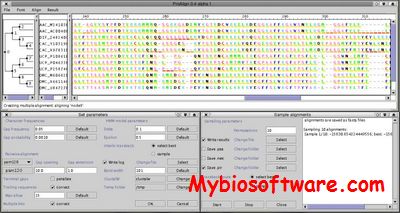Secator/DPC
:: DESCRIPTION
The Secator program for clustering protein sequences or coordinates data with the Secator rule on the dendrogram of hierarchical clustering.
The DPC program for clustering protein sequences or coordinates data with the DPC rule (small density between two high densities) for selecting the number of clusters
::DEVELOPER
:: SCREENSHOTS
N/A
:: REQUIREMENTS
- Linux
- C Compiler
:: DOWNLOAD
:: MORE INFORMATION
Citation
Secator: a program for inferring protein subfamilies from phylogenetic trees.
N.Wicker, G.R.Perrin, J.C.Thierry and O.Poch
Mol.Biol.Evol., 2001, 8:1435-1441
Density of points clustering, application to transcriptomics data analysis.
N.Wicker, D.Dembele, W.Raffelsberger and O.Poch
Nucleic Acids Res., 2002, 18:3992-4000
